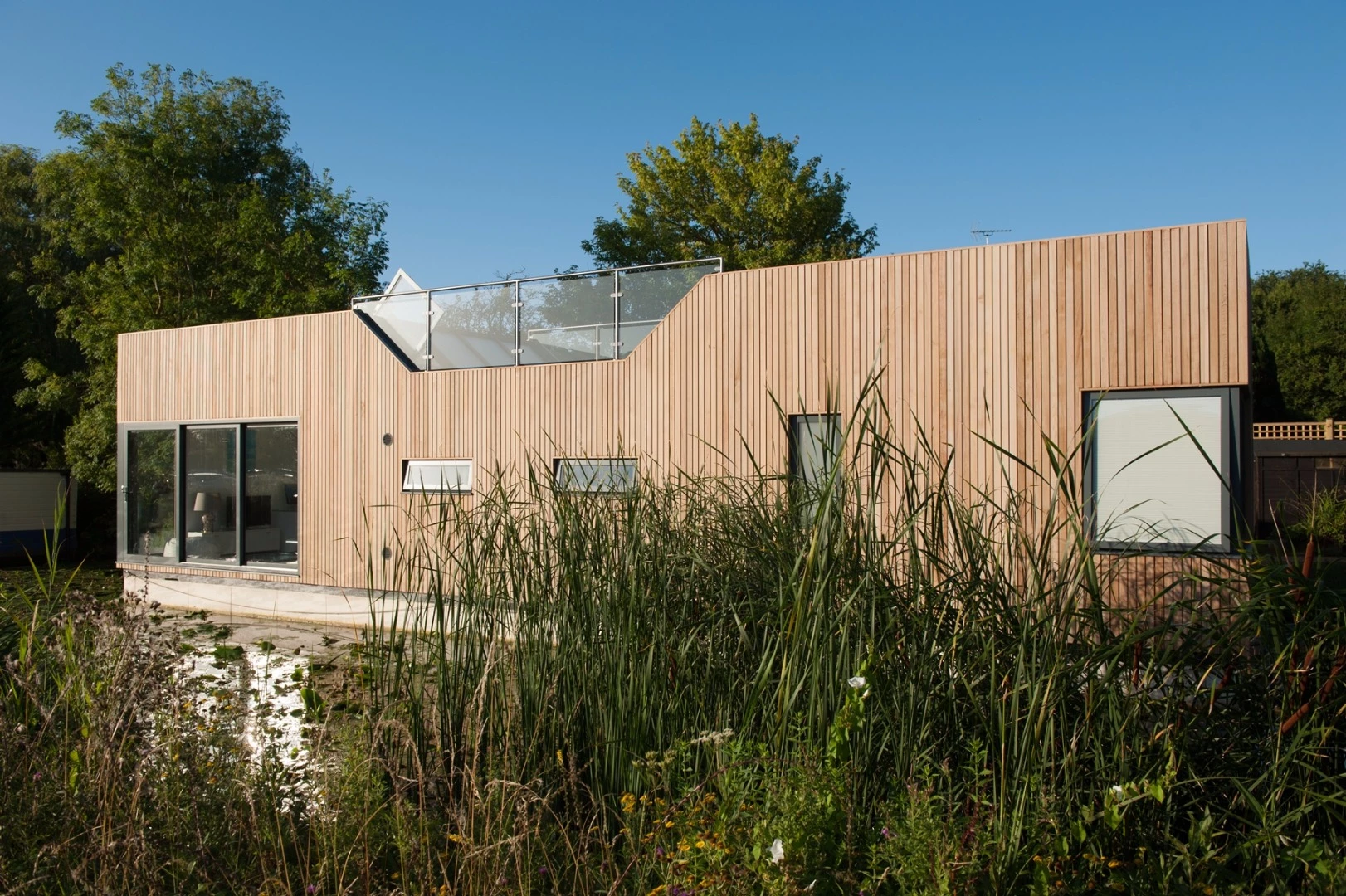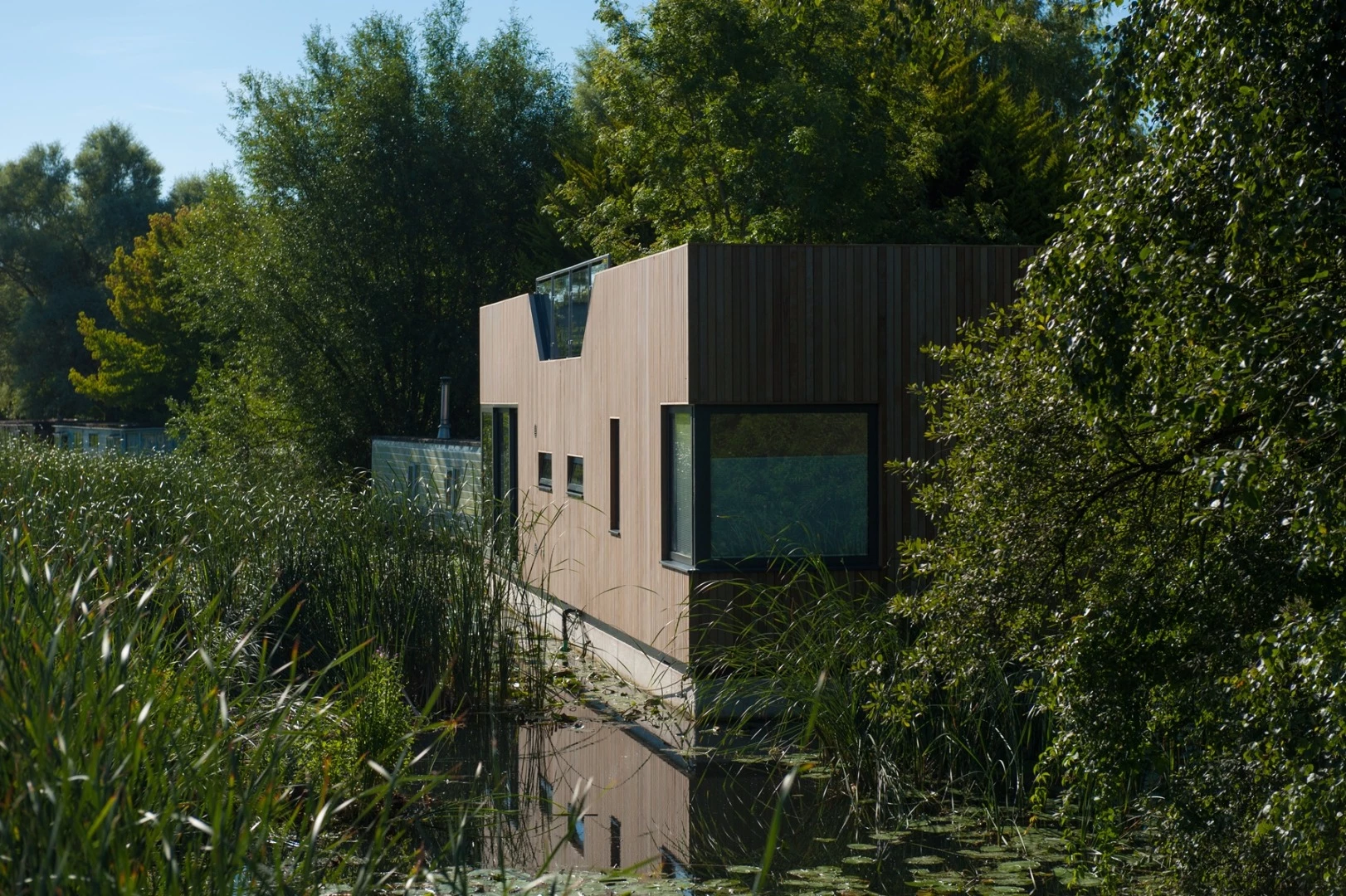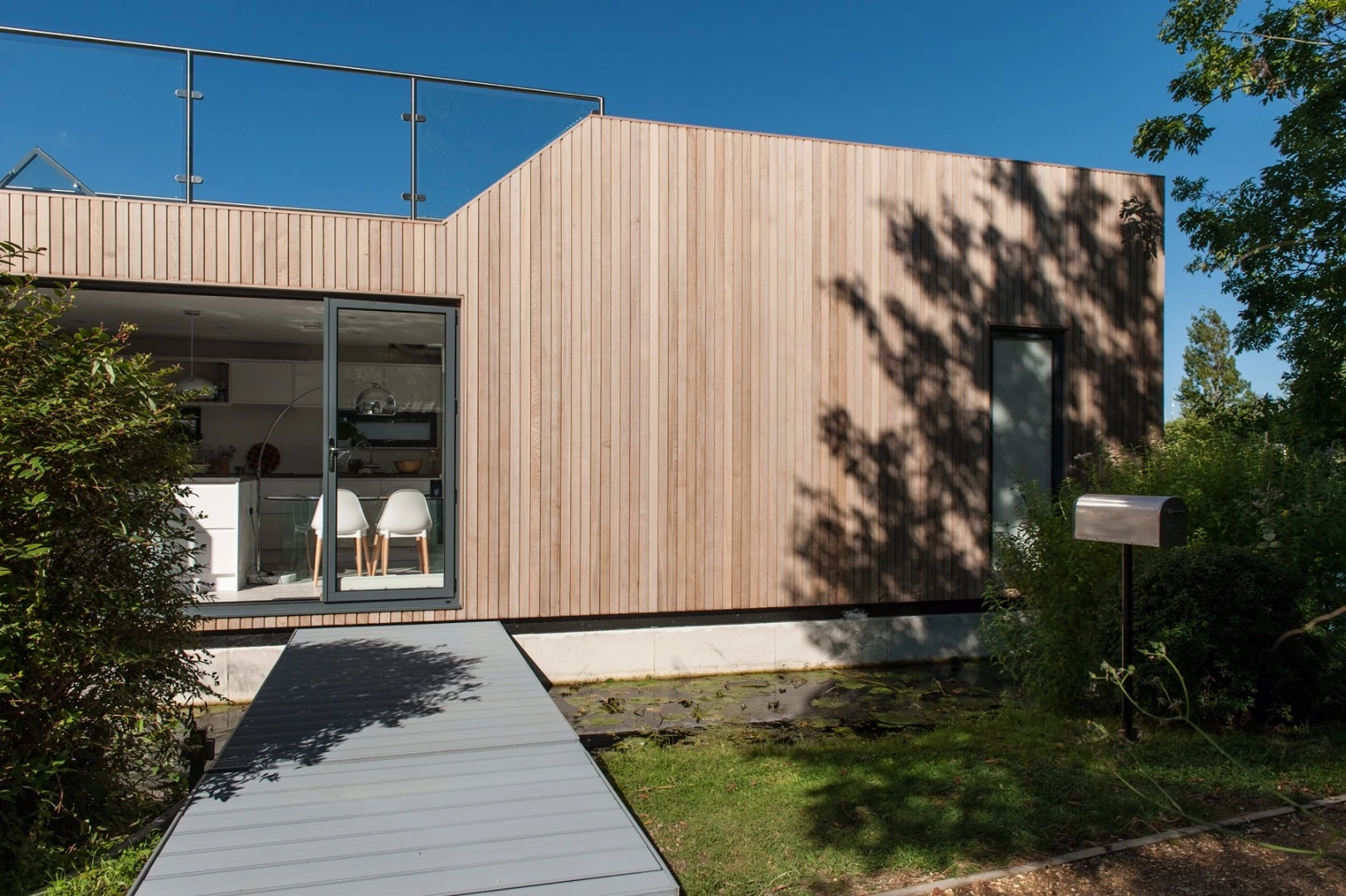There are lots of people who like the idea of living on water, but for whom the idea of living on a boat doesn't, well, float their boat. The Chichester floating home offers a solution to this, by giving residents the comforts of a house with the benefits of a waterborne lifestyle.
The outfit behind the Chichester is UK-based floating home company Floating Homes Ltd. As well as acting as the project developer, it also constructs the dwellings. For the design-work, though, Floating Homes enlisted Baca Architects, which has previously designed an amphibious house that's able to float on floodwater before sinking back down to its intended level as the waters recede.
Floating Homes began exploring ideas for the Chichester in June last year, although it says the idea has been 11 years in the making. It was inspired by narrow-boat and canal living, with a view to being made suitable for inland water, flood prone and marine locations.
The first prototype was recently completed on the UK's Chichester Canal, hence the name of the model, and it bears a number of similarities to the Bluefield Houseboats debut model. Both have a similar rectangular shape and boast luxuriously appointed interiors, wooden cladding and glass balustrades. The Chichester comes in a little cheaper, but without the app-controlled systems or planned off-grid option of the Bluefield Houseboats offering.

The Chichester accommodates a kitchen/dining space, a living room, a bedroom, a bathroom, storage space and a roof terrace with glass balustrades. It's also possible to add an optional floating terrace that extends the dwelling outwards. Inside, things are kept open-plan so as to make the most of the 77-sq m (823-sq ft) space, with full-height windows to capitalize on the surrounding views.
The building is clad with a western red cedar external façade, which offers a high-quality finish and shields the dwelling from the elements. It will be possible for future clients to choose a façade based on material, color and texture.
A modular approach to construction is employed, with the homes partly built off-site. For the prototype, a reinforced concrete hull was built in a Netherlands dry-dock, before being transported to the UK by truck, while the superstructure is prefabricated in the UK and then craned onto the hull. A "marine shock absorber" helps to steady the floating home.

The superstructure is made of structurally insulated panels (SIP), which comprises insulating material sandwiched between two panels. Used well, these can produce highly insulated and watertight buildings. They are also lightweight and help to minimize construction times.
The hull of the prototype Chichester was craned onto the water in May this year and the superstructure craned onto the hull June. The home was towed a short distance into its berth in a marina, where the finishing work was carried out and the unit hooked up to on-land electricity, water and sewage services. The project was completed in July.
Chichester floating homes start from £200,000 (US$245,000), which includes the interior fit-out but excludes delivery and mooring fees.
Sources: Baca Architects, Floating Homes
















